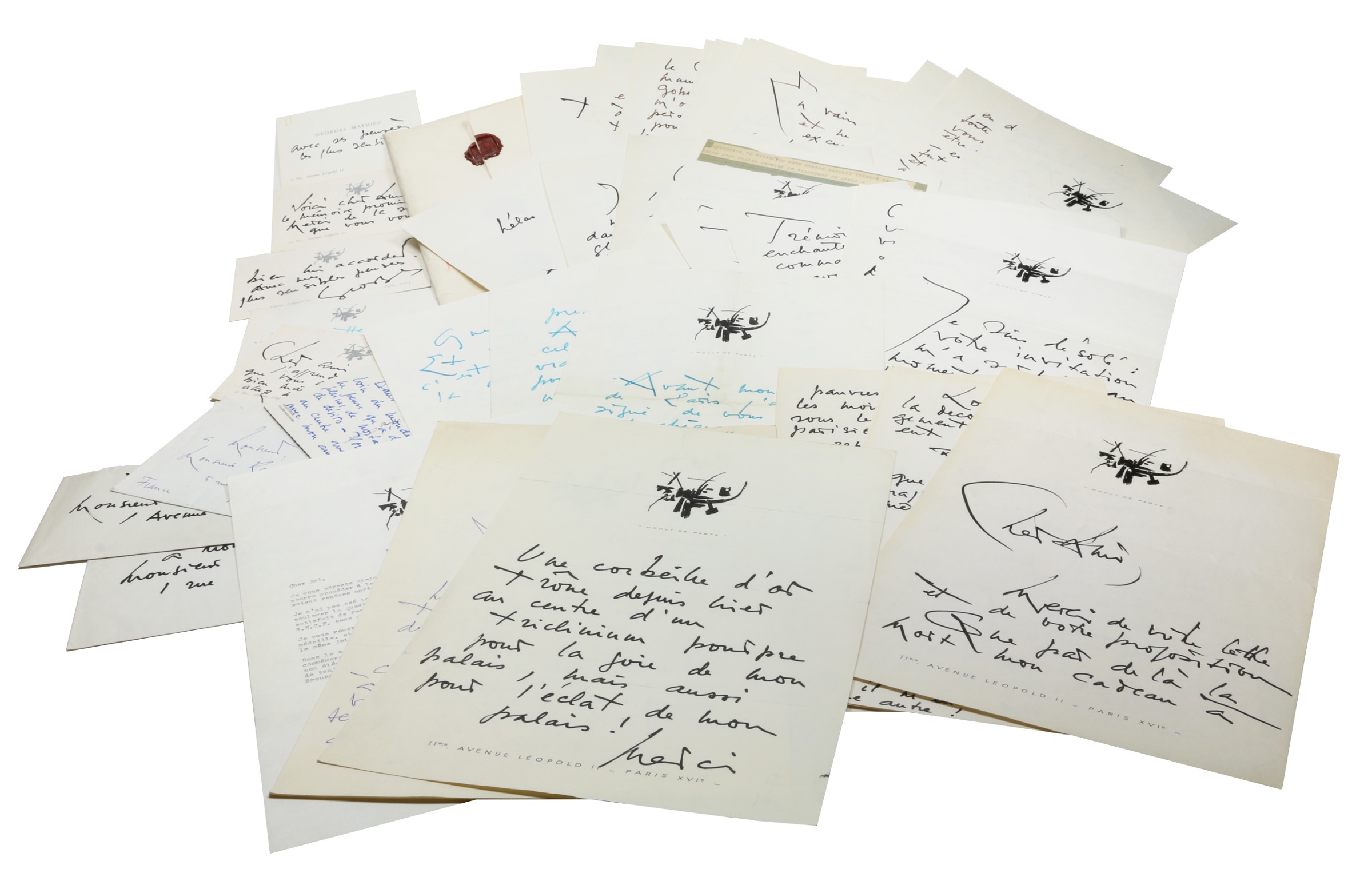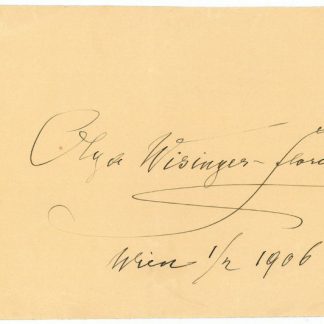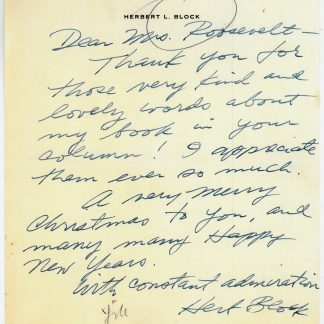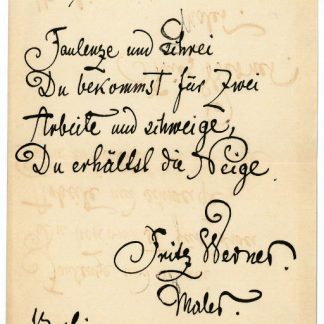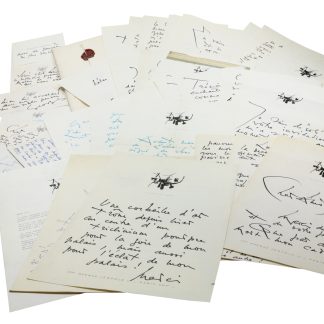"Since yesterday a golden basket thrones in the center of a purple triclinium for the joy of my palate, but also for the splendor of my palace!" - Georges Mathieu's correspondence with Raymond Nacenta
Collection of 10 autograph letters signed ("Georges" or "Mathieu"), 2 autograph postcards signed, 1 typed letter with 2 handwritten lines signed, 2 autograph letters, and 3 autograph dedications.
Various formats. Altogether 50 pp. With four autograph envelopes. In French.
€ 6.500,00
Correspondence with his art dealer and friend Raymond Nacenta (1899-1979), director of the Galerie Charpentier in Paris, concerning upcoming exhibitions, artistic projects, payments, and holidays (among other subjects). Mathieu’s style of writing is hyperbolic and bursts with enthusiasm, often matched by expressive calligraphy. In the longest letter in this collection, one of only two dated letters, Mathieu showers Nacenta with thanks and compliments: "The benefits of which I found myself the object by your care [...] are too great to be the external mark of my merit in spite of the very particular esteem that you seem to have made of my person [...] Happy; yes, you have made me happier than I can say [...] Your generosity is so much greater in intention than that of the Great Alexander that it can never be rewarded by the thanks I could give. Ah, if I were allowed at least to grant you the diadem of the Persians or the praises of Homer! [...]” (25 April 1966). In a letter in red ink, dated to 24 June with no year, Mathieu describes his anticipation of a coming exhibition: "I am thus living my last days of calm before undertaking the greatest battles of my history. Bloody adventure, where it will please me to triumph with You".
In a letter that can be dated to 1971-72, Mathieu mentions to Nacenta that he had met President Pompidou and told him that "he will receive a charming medal". The letter closes with one of Mathieu's starkest hyperboles: "I curse the merchants who make me work in the cold of my icy workshop, and I curse the muses who seem to have abandoned me. In this season the cows would keep me warmer. What am I, alas, the little Jesus!". In 1972, a tin medal designed by Mathieu was issued to commemorate the 10th anniversary of the Fifth Republic. Five years earlier, Mathieu had designed a bronze medal for the French railway company SNCF. On 20 Nov. 1967 Mathieu sent to Nacenta a zinc mould and some proofs necessary for casting the medal. In the accompanying letter, Mathieu states that he had talked to the general secretary of SNCF, Jules Antonini, and was ready to accept his payment in vouchers.
Mathieu was highly interested in French art and design of the 17th and 18th centuries. In the letters he mentions Charles LeBrun, Antoine Watteau, and the sculptors Philippe Caffieri and Pierre Lepautre who, for Mathieu, is "the incarnation of that so French measure which I flee from and which I need so much". In a postcard from Gstaad that is embellished with a beautiful calligraphic drawing in blue and red ballpoint, Mathieu exclaims: "Long live the masterpieces and artisanal rehabilitation", a motto that resonates with his art historical interests. A contemporary artist mentioned in the correspondence is Pierre-Yves Trémoin who "seems to be enchanted by the commission that you gave him". With respect to his own work, Mathieu reminds Nacenta: "You have forgotten that I was 'anti lithography of luxury numbered even for good works'" and therefore instead offered a gouache that "will not be multiplied". The two postcards are co-signed by a mutual friend named Solange, possibly the former actress and collector Solange Turenne.
All letters on Mathieu’s personal stationery with an embossed print of his design "Moult de Parte". This design reappears in three red seals on one of the envelopes. The brown ink and calligraphy of the address on this large cardboard envelope match the letter from 25 April 1966. Minor browning to the margins and occasional minor tears. Well preserved with traces of folds and some buckles.

